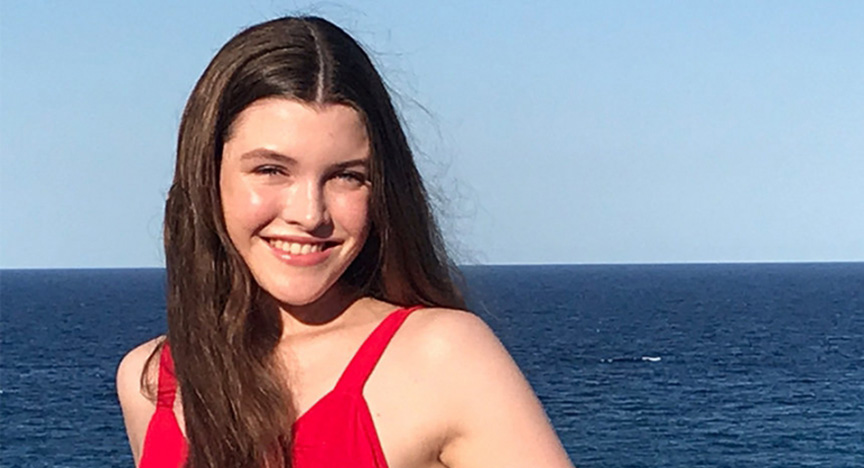
What began as a normal gymnastics training session, ended in the discovery of a life-changing health challenge for Isabella.
“My coach was looking at my back, and mentioned that I had a curve in it which I should probably go and get looked at by a GP – just to double check if it was OK. I went to the GP, and immediately they told me I had scoliosis,” Isabella, who was 12 at the time, said.
“It kind of all made sense – leading up to it I had some back pain, but I had simply put it down to growing pains, and the normal aches and pains of training, so I didn’t really take too much notice.”
“When I was diagnosed, I was I told that I couldn’t do gymnastics anymore because it would worsen the curve, so that was very difficult for me.”
Following a referral to the Queensland Children’s Hospital, Bella had four appointments before she underwent innovative thoracoscopic spinal surgery. This was the only option for Bella, as the usual techniques and rod surgeries would have meant she would have been unable to return to her passions of dance and gymnastics.
Thorascopic spinal surgery is a minimally invasive surgery performed under a special anaesthetic that permits one of the lungs to be deflated to expose the spine inside of the chest cavity. Using special keyhole telescopic instruments surgeons then enter the chest cavity through small incisions, remove some spinal discs, and insert a bone graft in the disc spaces between the vertebrae to fuse them together. A single screw is then placed into each vertebrae bone, and a titanium metal rod is then attached to the screws, which carefully corrects and stabilises the scoliosis curve while the bones are fusing together.
By the time Isabella underwent the surgery in 2018, her scoliosis had escalated from a 55-degree curve to a 70-degree curve – her GP even commented that he hadn’t seen a back so distorted in a long time. However, after five days recovering in the hospital following the surgery, and some rigorous rehab, Isabella was discharged home.
Determined to overcome her scoliosis for good, Isabella made it her mission to dance again.
“When I got home, I walked every day for eight weeks, because I was told walking helps the spine recover. After about eight-and-a-half weeks, I went back to dance, but I wasn’t dancing – I was just conditioning and training and getting my technique back. After three months, I started dancing again – not everything I could do before, but most things – and then at six months, I could do everything I could do before,” Isabella said.
Now 14, she has no back pain, and following her 12-month check-up in June this year, doctors see no reason for her to return for any follow-up appointments.
Isabella is now studying grade five and grade six ballet, and will undertake her ballet exams in September. She also has seven ballet competitions coming up this year, and is looking forward to dancing in a production of Alice – based on Alice in Wonderland, as part of the Gold Coast Youth Ballet Company.